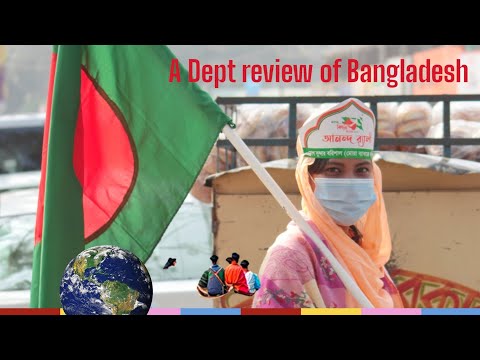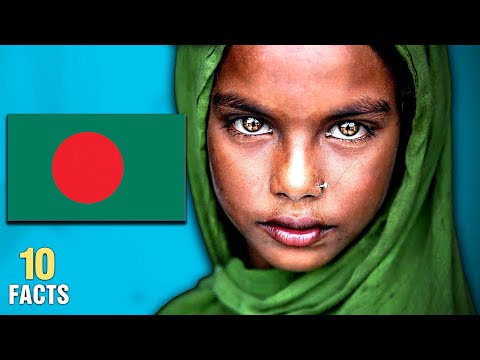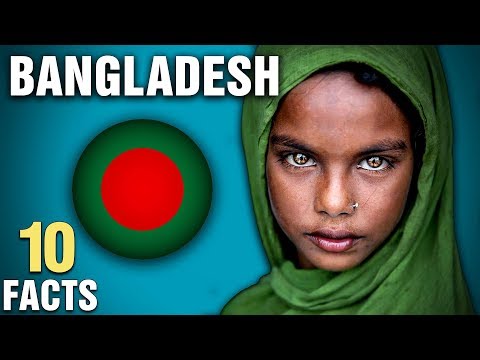Discover The Fascinating Fun Facts About Bangladesh: A Country Of Rich Culture And History
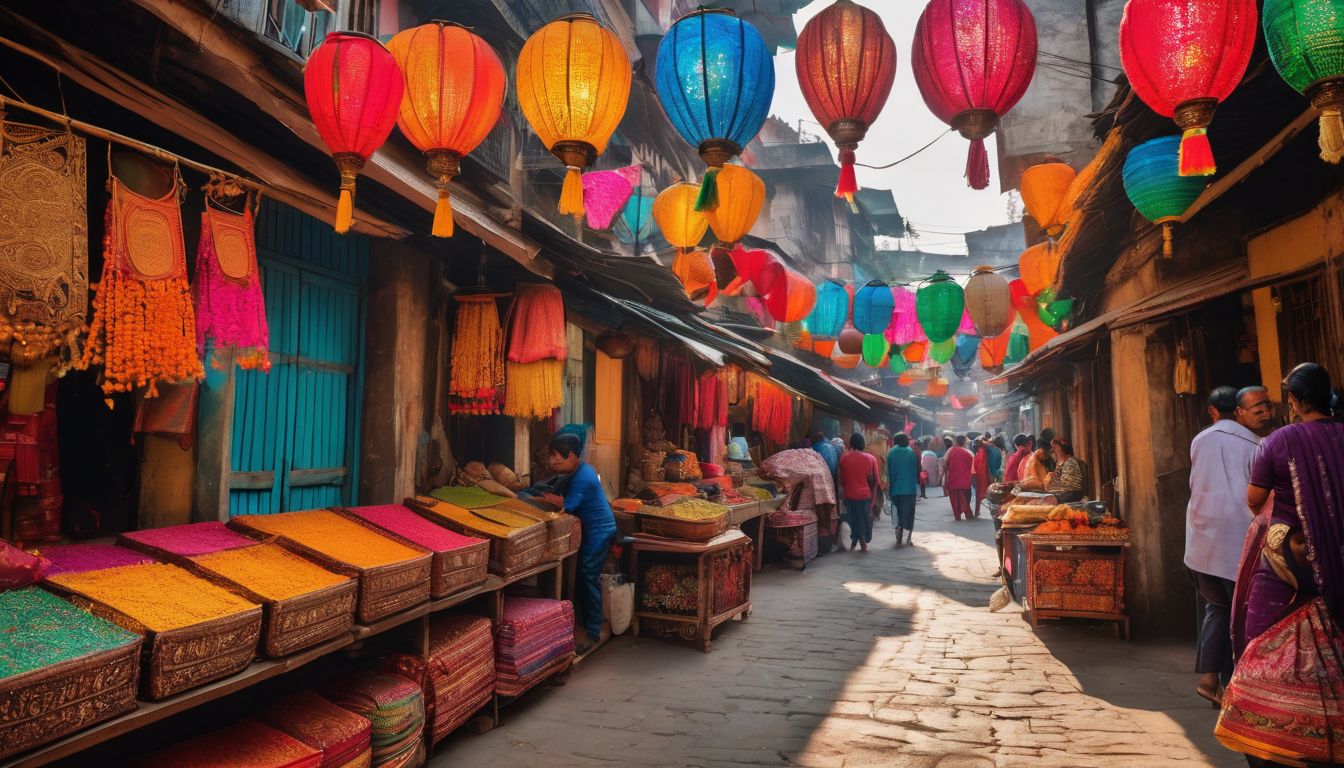
Curious about exploring lesser-known destinations? Bangladesh, the world’s eighth most populous country, is an untapped treasure trove of intriguing culture and history. This post will reveal many mesmerizing aspects of this South Asian gem that seem straight out of a fantasy novel.
Let’s embark on an extraordinary journey to discover Bangladesh!
Key Takeaways
- Bangladesh was formerly known as East Pakistan and gained its independence in 1971 after winning a war for freedom.
- Islam was introduced to Bangladesh in the 9th century by Arab traders, resulting in a majority Muslim population today.
- Bangladesh is home to over 700 rivers, making it a country with abundant water resources and earning it the nickname “Land of Rivers.”
- Kabaddi is the national sport of Bangladesh and holds great cultural significance, bringing communities together and fostering unity.
- The Sundarbans, located in Bangladesh, is the largest mangrove forest in the world and provides habitat for endangered Royal Bengal Tigers.
- Cox’s Bazar Beach in Bangladesh is the longest beach in the world at 75 miles long and offers stunning natural beauty.
- The Historic Mosque City of Bagerhat, recognized as a UNESCO World Heritage Site, showcases exceptional mosques and tombs from the 15th and 16th centuries.
- Despite its rich culture and history, tourism rates in Bangladesh are relatively low compared to other countries worldwide.
Historical Facts About Bangladesh

Bangladesh used to be known as East Pakistan before gaining its independence in 1971.
Used to be East Pakistan
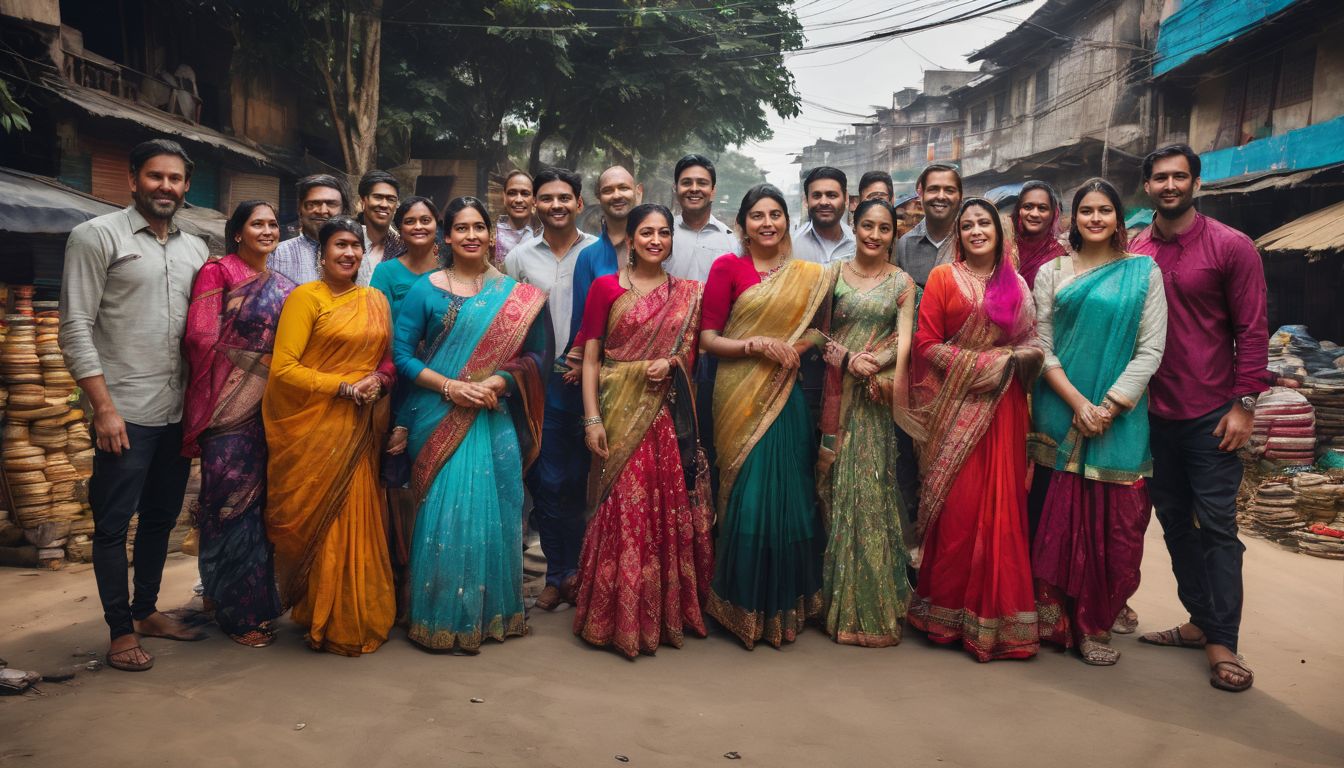
Bangladesh carries a rich past. Before it had its own name, people called it East Pakistan. It was part of Pakistan from 1947 until 1971. But, the two parts did not agree on many things.
Big fights and hard feelings caused them to split apart. So in 1971, East Pakistan became the country we now know as Bangladesh. This happened after they won a big war for freedom.
The British had power over this area before 1947 with today’s Pakistan and Bangladesh together. They used the name ‘East Pakistan’ to tell the east side apart from the west side of Pakistan.
Introduction of Islam in the 9th century
 Islam came to Bangladesh in the 9th century. Arab traders brought it here. These traders had strong faith in Islam. They spread their belief among the people they met in this area.
Islam came to Bangladesh in the 9th century. Arab traders brought it here. These traders had strong faith in Islam. They spread their belief among the people they met in this area.
Slow change happened after that. The Senas ruled at first. In the 12th century, Muslims from northwest took over their region. Now, many people in Bangladesh are Muslims due to this early history with Islam.
Previous military rule
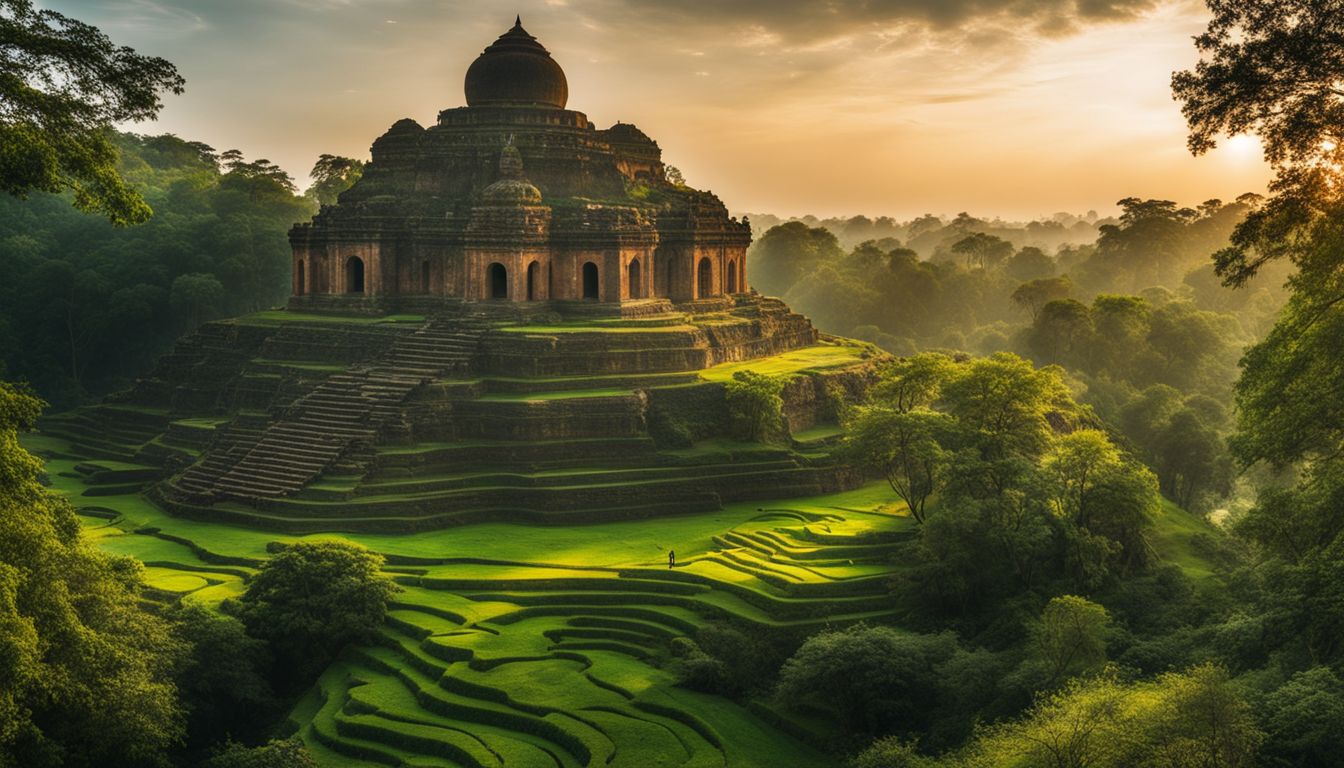
Bangladesh was under military rule for many years. After bigger empires like Maurya and Mughal, the British held power. This is part of Bangladesh’s rich past. The country now stands free and proud after these hard times.
Such facts about Bangladesh showcase its strength over time.
Third-Order Enclave
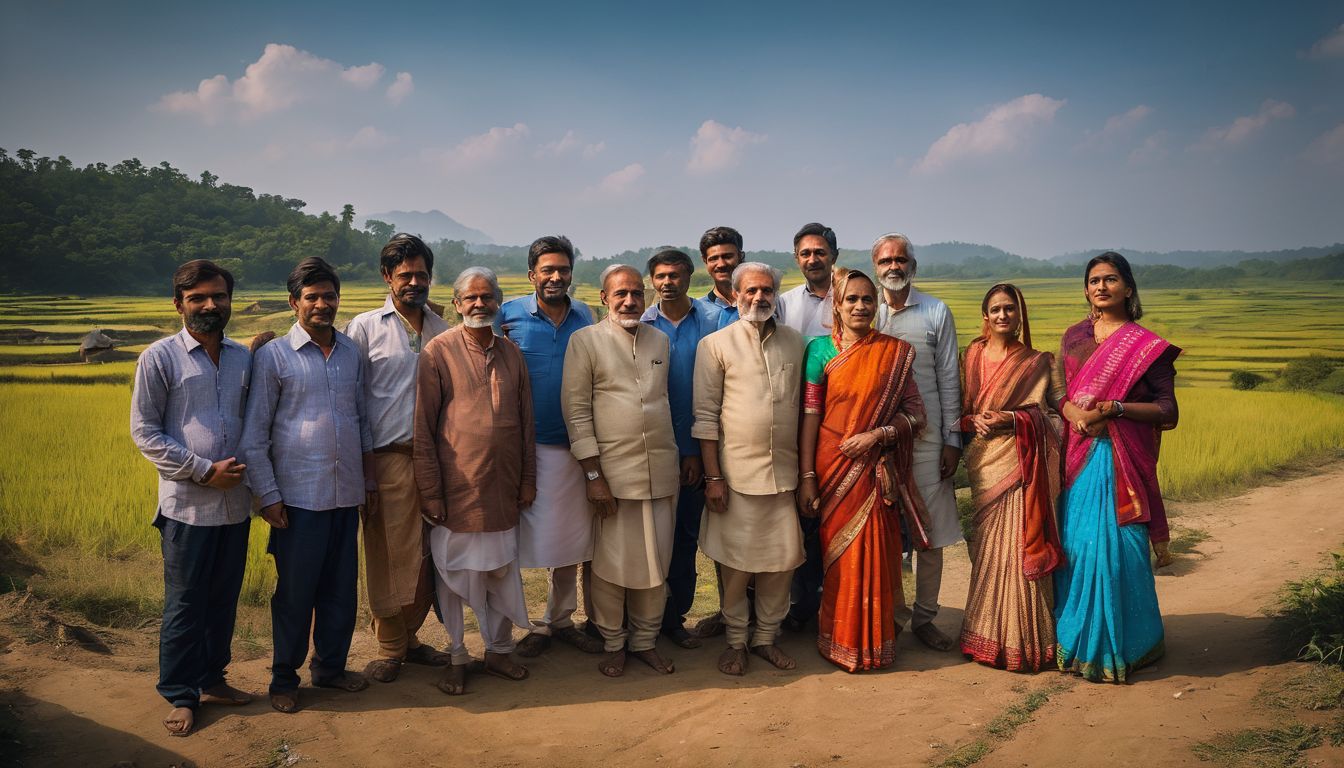
There is a fascinating geographical phenomenon in Bangladesh called the Third-Order Enclave. This enclave, called Dahala Khagrabari, is not only located within India but also within Bangladesh itself.
It is the world’s only third-order enclave. In the past, enclaves of India and Bangladesh were primarily found in the North Bengal region. However, Dahala Khagrabari stands out as a unique historical and geographical marvel due to its existence within an enclave.
Cultural Facts About Bangladesh

Bangladesh has a deep love for the sport of Kabaddi, with many passionate players and dedicated fans. Read on to discover more fascinating cultural facts about this vibrant country!
Love for Kabaddi

Kabaddi is the national sport of Bangladesh. People in Bangladesh have a deep love for Kabaddi, and it is an important part of their culture. The game is played with two teams, where one player from each team takes turns to run into the opponent’s half and tag as many players as possible before returning safely to their own side.
It requires agility, strength, and quick thinking.
Kabaddi matches in Bangladesh attract large crowds and create an electric atmosphere filled with excitement and enthusiasm. The audience cheers passionately for their favorite teams, creating a vibrant and energetic environment.
Many skilled Kabaddi players from Bangladesh have achieved international recognition due to their talent and dedication.
Playing Kabaddi is not just a sport for people in Bangladesh; it holds symbolic significance as a representation of national pride. It brings communities together, fosters teamwork, and promotes physical fitness among individuals of all ages.
The love for Kabaddi embodies the spirit of unity that resonates throughout the country.
High number of Bangladeshis living abroad
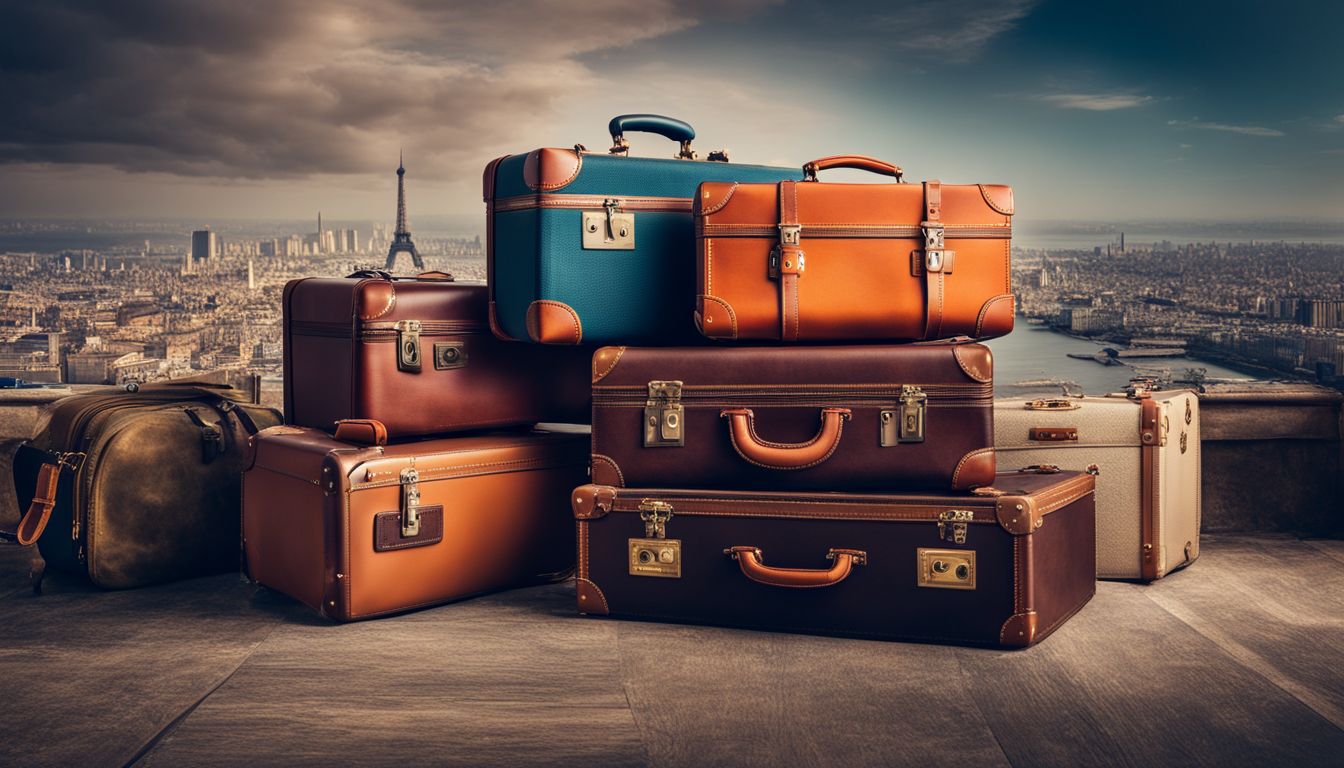
Nearly 10 million Bangladeshis live abroad, which is one of the highest numbers of emigrants in the world. They can be found in various countries like the United States, the United Kingdom, Saudi Arabia, and Malaysia.
These Bangladeshis contribute to both their host countries and back home through employment, entrepreneurship, and cultural exchange. Their remittances play a significant role in the country’s economy as billions of dollars are sent back each year.
The large Bangladeshi diaspora offers opportunities for global understanding of Bangladesh’s rich culture and heritage while also reflecting push factors like limited opportunities at home and pull factors such as better job prospects overseas.
Traditional cuisine featuring fish

In Bangladesh, fish is a very important part of their traditional cuisine. The people of Bangladesh love to eat fish and it plays a significant role in their daily meals. Many traditional dishes are made using different types of fish as the main ingredient.
Hilsa, which is found in the Bay of Bengal, is considered the national fish of Bangladesh and is widely used in various recipes. The rich variety of fish available in rivers and ponds allows for endless possibilities when it comes to cooking delicious and flavorful dishes.
Fish curry, fried fish, and steamed fish are just some examples of the mouthwatering delicacies that you can try when exploring the traditional cuisine of Bangladesh.
Interesting Facts About Bangladesh For Kids

Bangladesh is home to over 700 rivers, making it a country with abundant water resources.
Over 700 rivers
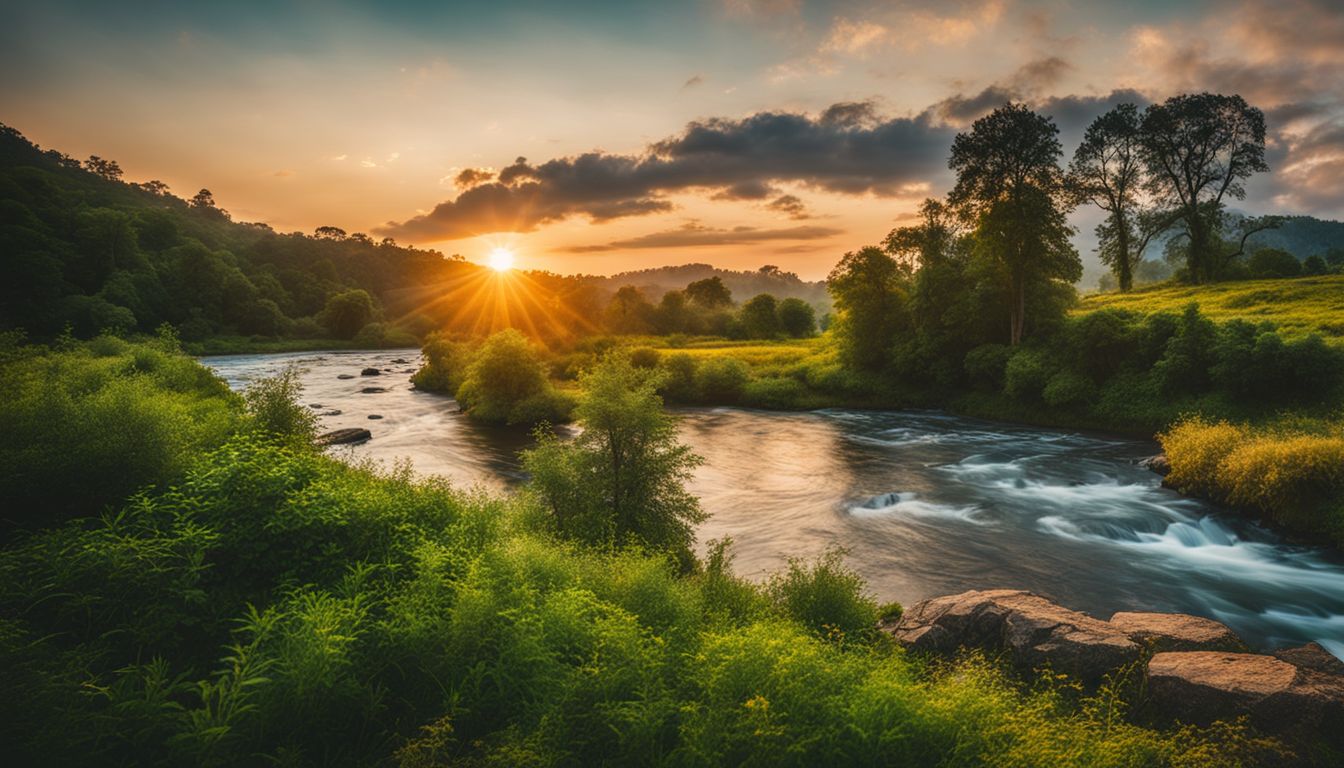
Bangladesh is a country of many rivers. In fact, there are over 700 rivers in Bangladesh! It’s no wonder that the country is often called the “Land of Rivers.” One interesting fact is that Bangladesh has the highest number of trans-boundary rivers in the world, with over 57.
These rivers play a crucial role in the lives of the people and contribute to agriculture and transportation. They also provide habitat for various plants and animals, making Bangladesh a biodiverse country.
So when you visit Bangladesh, make sure to explore its beautiful rivers!
Threatened Royal Bengal Tigers
The Royal Bengal Tiger, which is the national animal of Bangladesh, faces threats to its survival. These tigers are mainly found in the Sundarbans, a mangrove forest located between Bangladesh and India.
Due to habitat loss and poaching for their body parts, the population of Royal Bengal Tigers has significantly declined over the years. Conservation efforts are being made to protect these majestic creatures and ensure their survival in the wild.
Top recycler of ships
Bangladesh is known as the “Top recycler of ships” in the world. The ship recycling industry in Bangladesh plays a significant role in the country’s economy. It involves dismantling and recycling old ships, salvaging valuable materials like steel.
However, there have been concerns about environmental and safety practices in the past. Efforts have been made to improve standards in the shipbreaking yards. Despite these challenges, this industry provides employment for thousands of workers in Bangladesh.
Fun Facts About Bangladesh for Travelers
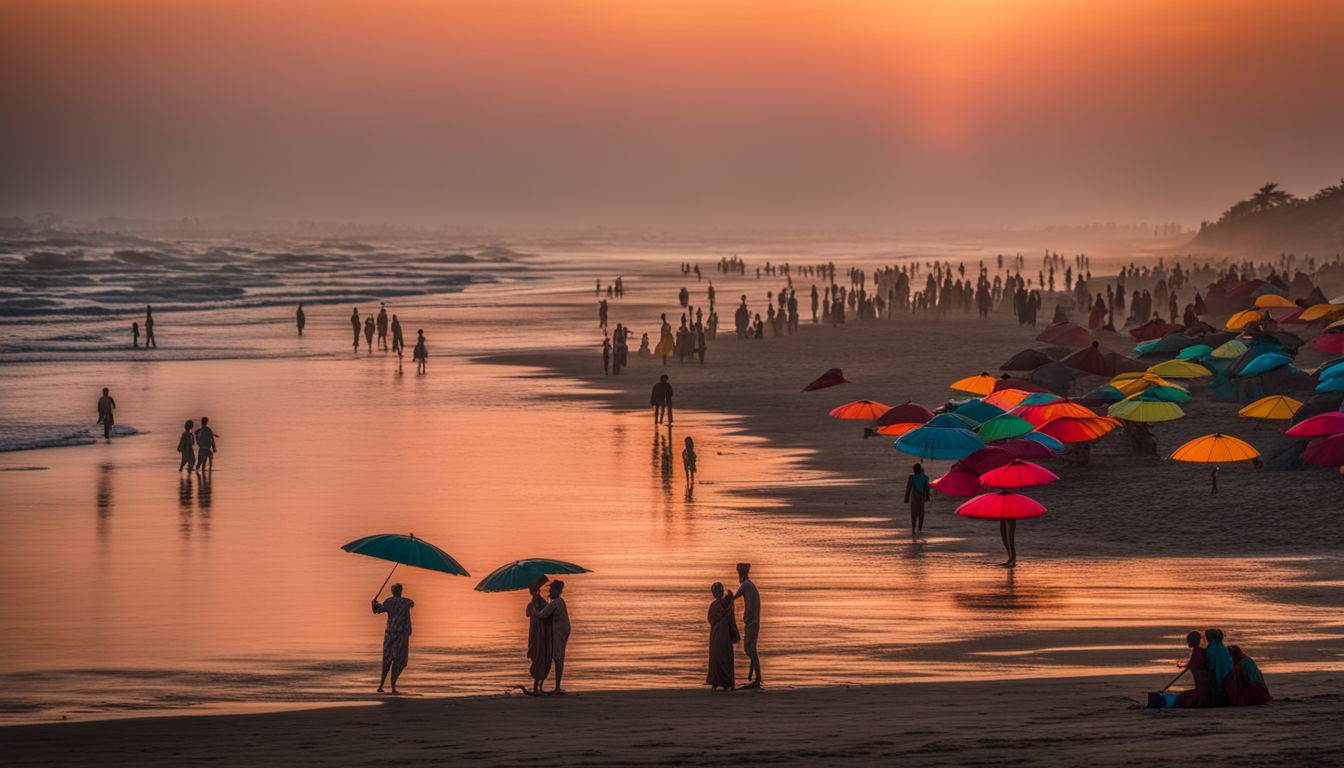
Bangladesh is home to the world’s longest beach, Cox’s Bazar, stretching over 120 kilometers.
Longest beach in the world
Cox’s Bazar Beach in Bangladesh is a must-visit for beach lovers. It holds the title for being the longest beach in the world, stretching an impressive 75 miles! Located about 150 kilometers southeast of Dhaka, this beautiful beach is also the longest uninterrupted beach in all of Asia.
People flock to Cox’s Bazar Beach to soak up its natural beauty and enjoy activities like swimming, sunbathing, and water sports. However, it’s important to note that due to cultural norms and modesty standards in Bangladesh, bikinis are not commonly worn at this beach.
So make sure you pack appropriate swimwear before visiting this incredible stretch of sand!
Largest mangrove forest
The Sundarbans is the biggest mangrove forest in the world, located in Bangladesh’s Khulna Division. It covers an area of 10,000 square kilometers and is a UNESCO World Heritage Site.
The Sundarbans is formed by three rivers – the Ganges, Brahmaputra, and Meghna. This amazing forest is famous for its diverse wildlife and especially known for being home to the endangered Royal Bengal Tiger.
Visitors can enjoy activities like boat rides, jungle safaris, and bird watching in this incredible natural wonderland.
Historic Mosque City of Bagerhat
The Historic Mosque City of Bagerhat is a special place that has been recognized as a UNESCO World Heritage Site. It’s located in Bangladesh and was established almost 600 years ago on the edge of the Sundarbans, which is a famous mangrove forest.
This city is known for its incredible mosques and tombs that were built in the 15th and 16th centuries. In fact, there are about 360 of them! When you visit Bagerhat, you’ll get to see the architectural brilliance of this time period up close.
It’s like stepping back in time and getting a glimpse into history. Plus, Bagerhat isn’t too far from the Sundarbans or the Brahmaputra and Ganges rivers, so there’s plenty to explore nearby.
Low tourism rates
Bangladesh has low tourism rates compared to other countries worldwide. The country attracts only around 125,000 tourists each year. Despite its rich culture and history, many travelers overlook Bangladesh as a destination.
This may be due to lack of awareness or concerns about safety. However, for those who do venture to visit, they are rewarded with unique experiences and the opportunity to explore a hidden gem that is yet to be discovered by the masses.
Common Facts About Bangladesh
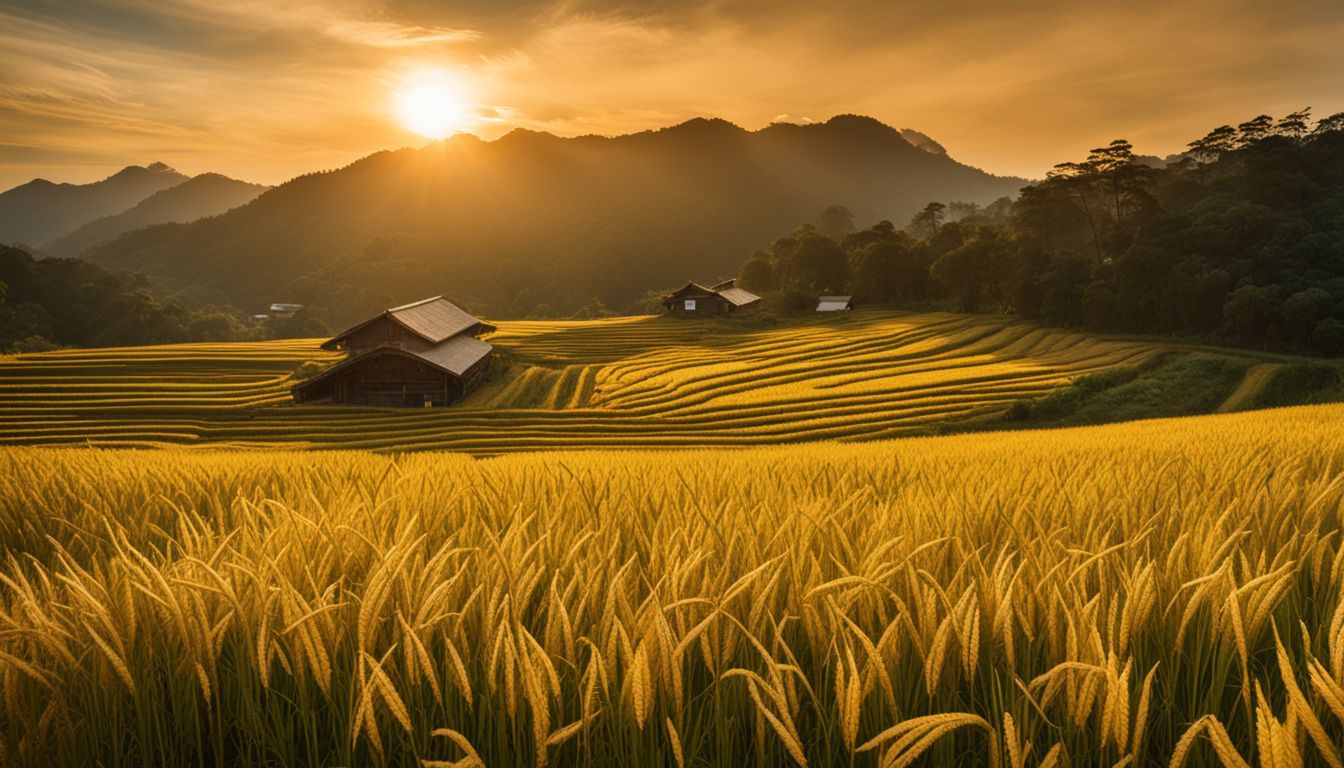
Bangladesh has remarkably low obesity rates, with a majority of its population engaged in agriculture as their main means of livelihood. The country’s flag holds significant symbolism and represents the pride and resilience of its people.
Low obesity rates
Bangladesh has one of the lowest obesity rates in the world. This means that not many people in Bangladesh are considered overweight or obese. It’s quite impressive considering that obesity is a growing problem in many countries around the globe.
One reason for this low obesity rate could be the relatively low consumption of meat in Bangladesh, as compared to other countries where meat-heavy diets can contribute to weight gain.
Additionally, religion plays a significant role in Bangladeshi culture, and studies have shown that religious practices and beliefs can influence eating habits and body weight. Overall, these factors contribute to Bangladesh having such low obesity rates among its population.
Dominance of agriculture in workforce
Agriculture is the most important sector in Bangladesh’s workforce. Many people in the country rely on farming for their livelihoods. The primary crops grown are rice and jute, but there is also an increasing focus on maize and vegetables.
This shows how significant agriculture is to the economy of Bangladesh.
Symbolism of the country’s flag
The flag of Bangladesh has important symbolism. The green color in the flag represents the country’s lush vegetation. It symbolizes the abundant nature found in Bangladesh. The red disc on the flag is significant too.
It represents the bloodshed and sacrifice made by the people during the Bangladesh Liberation War in 1971. This war led to Bangladesh becoming an independent nation. The red disc is based on a similar design used during the war, which featured a yellow map of Bangladesh inside it.
So, not only does the flag represent natural beauty, but it also honors those who fought for independence.
Other Interesting Facts About Bangladesh

Bangladesh is also recognized as the birthplace of microcredit, with Nobel Peace Prize winner Muhammad Yunus pioneering this concept to help alleviate poverty.
Birthplace of microcredit
Bangladesh is known as the birthplace of microcredit. In 1983, Professor Muhammad Yunus established the Grameen Bank in Bangladesh with the belief that credit is a fundamental human right.
This innovative approach to providing small loans to those without access to traditional banking systems has had a significant impact on poverty alleviation and economic empowerment worldwide.
The Grameen Bank’s success in Bangladesh inspired similar microcredit initiatives around the globe, making it a pioneer in this field.
Textile industry as main export
The textile industry is a crucial part of Bangladesh’s economy. It accounts for 77% of the country’s merchandise exports, making it the main export sector. In fact, Bangladesh is the third largest exporter of clothing and apparel to the US, following China and Vietnam.
The industry plays a significant role in contributing to Bangladesh’s GDP and national exports. With around 4,500 garment factories and facilities dedicated to textile exports, popular clothing brands like H&M, Zara, and Gap manufacture their products in Bangladesh.
More than 80% of the country’s total exports come from this booming garment sector.
Significant impact of climate change
Climate change has had a significant impact on Bangladesh, making it one of the countries most affected by this global issue. Due to its geographical location and social vulnerability, Bangladesh is highly susceptible to climate change impacts.
The country experiences frequent flooding, which is worsened by climate change effects like sea-level rise and increased rainfall intensity. This poses serious threats to human lives, settlements, agriculture, and infrastructure.
Recognizing these challenges, Bangladesh has taken local-led action and implemented adaptation measures to address climate change. However, the effects of climate change remain a critical issue for the country as it continues to face high levels of vulnerability to its impacts.
Discovering More Fun Facts About Bangladesh

There are even more fun facts about Bangladesh to discover! Did you know that Bangladesh is the birthplace of microcredit? This innovative concept has helped many people around the world lift themselves out of poverty.
Additionally, the textile industry is a significant part of Bangladesh’s economy, with garments being its main export. However, climate change poses a serious threat to the country, as rising sea levels and extreme weather events impact its coastal areas.
Despite these challenges, Bangladesh remains resilient and continues to make strides in various fields.
Planning Your Trip to Bangladesh

When planning your trip to Bangladesh, make sure to book your flights in advance for the best deals. Look for accommodations that offer a blend of comfort and affordability. Don’t forget to get travel insurance to protect yourself during your journey.
And most importantly, be prepared for exciting adventure opportunities that await you in this beautiful country!
Book flights
To plan your trip to Bangladesh, the first step is to book your flights. Bangladesh has several international airports, including Shahjalal International Airport in Dhaka and Shah Amanat International Airport in Chittagong.
You can search for flights online or contact travel agencies for assistance. The country is served by various airlines, such as Biman Bangladesh Airlines and foreign carriers like Emirates and Singapore Airlines.
Keep in mind that flight availability may vary depending on the time of year and demand. Once you’ve found suitable flights, you can proceed with the rest of your travel arrangements.
Find accommodations
Bangladesh offers a wide range of accommodations for travelers. Whether you’re looking for hotels, guesthouses, or homestays, there are options available to suit every budget and preference.
Many accommodations are conveniently located near popular tourist attractions, making it easy for visitors to explore the country’s rich culture and history. Online booking platforms have made finding and booking accommodations in Bangladesh hassle-free.
The hospitality industry in the country is rapidly growing with new accommodations being built, ensuring that there are always choices available for travelers.
Travel insurance
Travel insurance is an important thing to consider when planning your trip to Bangladesh. It provides coverage for emergency medical or dental care during your trip, giving you peace of mind in case anything unexpected happens.
For travelers visiting the USA from Bangladesh, travel insurance plans also provide coverage against flight and baggage delays. Comprehensive travel insurance plans offer 24/7 medical assistance for travelers in Bangladesh, ensuring that help is just a phone call away if needed.
Additionally, travel insurance covers expenses related to medical evacuation, which can be costly without proper coverage. Before traveling to Bangladesh, it’s always a good idea to explore the country profiles available that include information on travel insurance options.
Adventure opportunities
Bangladesh offers exciting adventure opportunities for travelers looking to add some thrill to their trip. With its diverse landscapes, you can indulge in a range of outdoor activities that cater to all levels of adventure.
If you’re an adrenaline junkie, hiking through the lush green hills and mountains will satisfy your cravings. For water sports enthusiasts, there are options like river rafting, kayaking, and even surfing on Cox’s Bazar Beach – the longest beach in the world.
Wildlife lovers can embark on safaris in national parks to spot rare species like Royal Bengal Tigers or explore the largest mangrove forest, Sundarbans. Whether it’s climbing mountains or exploring underwater wonders while scuba diving, Bangladesh has something for every adventure seeker!
Conclusion
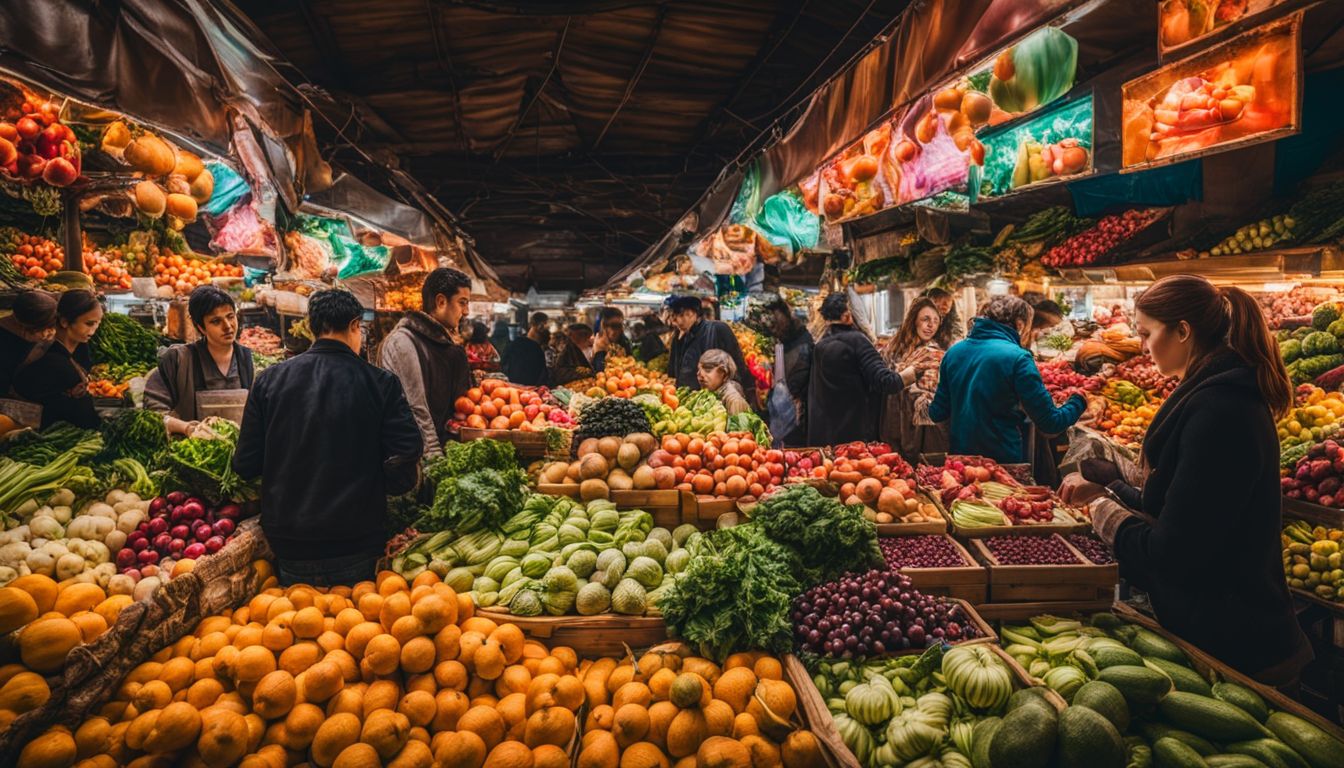
In conclusion, Bangladesh is a captivating country with a rich culture and history. From its historical significance as former East Pakistan to its love for kabaddi and traditional cuisine, there are endless fascinating facts to discover.
Whether you’re planning a trip or simply interested in learning more, exploring the fun facts about Bangladesh will leave you amazed by this unique and vibrant nation. So get ready to delve into the wonders of Bangladesh and uncover even more exciting information about this incredible country!
FAQs
1. What is the culture of Bangladesh like?
Bangladesh has a rich and diverse culture influenced by various religions, languages, and traditions. It is known for its music, dance, art, literature, festivals, and warm hospitality.
2. What are some famous landmarks in Bangladesh?
Some famous landmarks in Bangladesh include the historic city of Dhaka with its Lalbagh Fort and Ahsan Manzil palace, the ancient ruins of the Sundarbans mangrove forests, and the beautiful Cox’s Bazar beach.
3. What is the history of Bangladesh?
Bangladesh has a long history that includes periods of colonization by various empires such as the Maurya Empire and British Raj. It gained independence from Pakistan in 1971 after a liberation war.
4. What are some traditional dishes in Bangladesh?
Traditional dishes in Bangladesh include rice-based meals like biryani and khichuri (rice cooked with lentils), along with seafood curries such as hilsa fish curry and bhuna shrimp.
5. How can I experience Bangladeshi culture firsthand?
To experience Bangladeshi culture firsthand, you can visit local markets to explore traditional crafts and products or attend cultural events such as folk music concerts or religious festivals like Eid or Pohela Boishakh (Bengali New Year).
